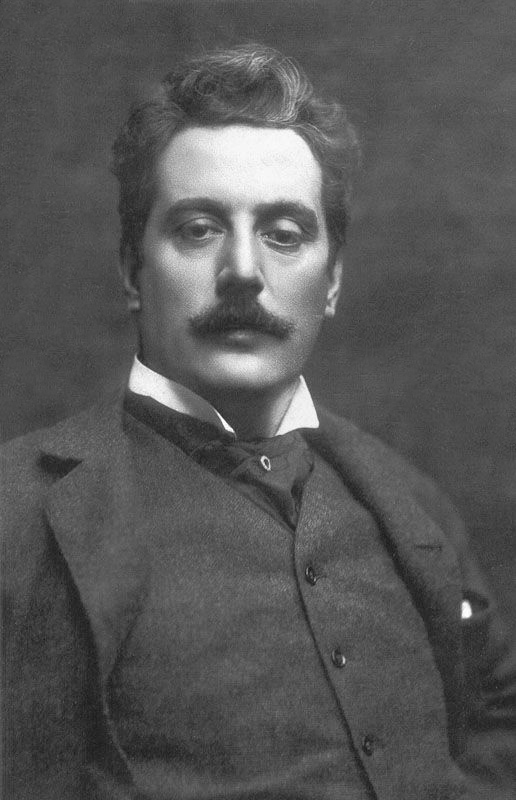Puccini - Manon Lescaut
La Monnaie, Brussels, Sunday January 27 2013
Conductor: Carlo Rizzi. Production: Mariusz Trelinski. Sets: Boris Kudlicka. Costumes: Magdalena Musial. Lighting: Felice Ross. Video & LED design: Bartek Macias. Manon Lescaut: Amanda Echalaz. Lescaut: Lionel Lhote. Il Cavaliere Renato Des Grieux: Hector Sandoval. Geronte de Ravoir: Giovanni Furlanetto. Edmondo: Julien Dran. Il Maestro di Ballo & Un Lampionaio: Alexander Kravets. Un Sergente: Guillaume Antoine. Un Musico: Camille Merckx. L’Oste: Guillaume Antoine. Coro del Madrigale: Amalia Avilán, Anne-Fleur Inizian, Audrey Kessedjian, Julie Mossay.
If you leave at the interval, chances are someone will tell you it got better after. This time, for Manon Lescaut, I was tipped off by a friend present on opening night, so we stayed. And indeed, it got better.
The simple (to be honest, simplistic) way to describe this production to anyone who saw La Monnaie’s recent Traviata would be to say it was more of the same, only in black sets instead of white - adding perhaps that it was more neo-sub-Warlikowski than echt Berlin style. There were similar acts of gratuitous sadism on naked girls in a corrupt, criminal, nouveau-riche milieu (Geronte’s), the difference being only that Geronte and Lescaut were less chic in dress (white suits, black shirts and bling) than the sleek, Kooples-black Traviata gang, and here it seemed to be a private, sex-trade prison Manon was in, not La Traviata's rainy container park.
 |
| Puccini |
Though quite often this setting worked with the text, as for example business people in grey and a handful of air stewardesses in light blue (the chorus) dashed through the concourse, for the first two acts the production seemed to be a lot of hard work for not enough effect: too many ideas confusing the story. And some details were incongruous: in such a setting, would Manon, smoking in her stilettos and dark glasses, really be off to a convent? When snatching up her jewels with Geronte close on her heels, would she really stoop to roll up the carpet and carry that off as well? In the final act, now with dark hair (change of wig: Warlikowski), smoking again in her tightly-belted leather coat, high heels and sunglasses and complaining, as the little old lady next to me pointed out, of darkness closing in (“Take your bloody glasses off, then” the old lady had thought), did she really look ill? And why did Des Grieux just curl up to sleep on the waiting-room chairs instead of going off to find water? When he “came back" (i.e. woke up) he still claimed to have searched high and low, the liar…
There were some strong images, however, and the second half, less cluttered, was more effective. I enjoyed the musician and madrigal singers in identical gold lamé mini-dresses, spangled high heels and short blond bobs, writhing under their stark, individual spotlights. The combination of musical prelude and cityscape of coloured lights at the start of act three was magical. And the procession, before an audience of those business people in grey, of bruised and bloodied women prisoners/prostitutes in a state of the most abject degradation, prodded along by the air hostesses in blue (a nod at modern deportations by plane?), was a very grim moment. But the use of Manon doubles in the final act brought a degree of confusion back, and having Manon simply walk off, centre stage, into red video screens seemed an almost corny ending, though it could be she was off to further femme fatale adventures while Des Grieux settled into a new relationship with a new Manon.
Overall, despite such detailed directing, I never felt Trelinski succeeded in projecting convincing personalities or making Manon worth caring about (perhaps, the friend who tipped me off suggested, he meant to deal only in archetypes) so we were never actually moved.
The orchestra was at its late-romantic best – warm and supple yet precise - giving rise to something of a mis-match between luscious music-making and the gruesome on-stage goings-on, though the end of the first half was raucous enough to wake the little old lady up. The chorus was equally excellent and, apart from Giovanni Furlanetto, strong secondary parts (congratulations to Julien Dran) supported pretty good principals. Lionel Lhote is, as I’ve said before, a very sound Brussels regular, here perhaps the most successfully-cast of all present. The young Mexican tenor, Hector Sandoval, had a nice, warm, Italianate timbre and some very nice notes in the upper medium but lacked power at critical moments. This led to an occasional imbalance with Amanda Echalaz’s ample, hard-edged soprano, more, you might say, di forza than di grazia, but in fact quite well suited to the hard-edged second half staging.
La Monnaie will stream this production on the website from February 12.




I love orchestra, it is really different from music nowadays, long live the orchestra!
ReplyDeleteZero Dramas